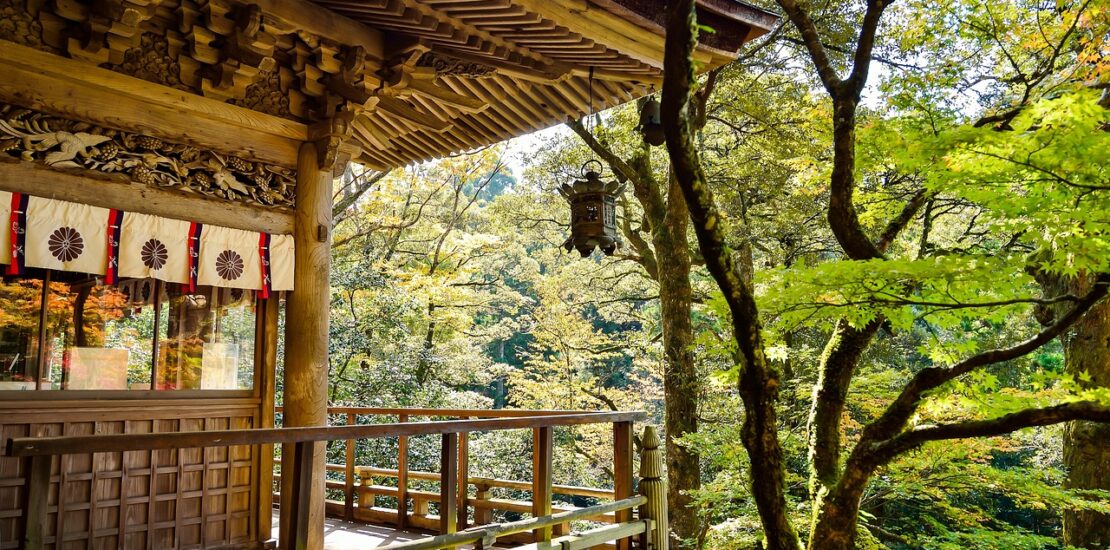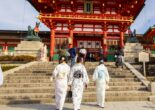Unspoken rules in Japan are a tricky topic, especially when stepping into Japan’s distinguished temples and shrines. Read this guide on shrine and temple etiquette in Japan to enhance your visit with confidence and respect.

Whether you’re just visiting Japan or staying long-term, it’s only a matter of time before you find yourself exploring the grounds of an ancient shrine or temple. These sacred sites are an essential aspect of Japanese history and society, and getting to know them is a great step in making your travels or transition into living in Japan that much easier. Read on for insightful tips and tricks on how to navigate your next visit with confidence and reverence.
Beginnings of Shrines and Temples in Japan

Which came first shrines or temples? When looking deeper into history one can discover that shrines were the first of the two, dating back to the Yayoi period (300 BCE to 300CE). While there’s no official record book to keep track of the very first shrines in Japan, there is speculation that Izumo Taisha (出雲大社), based in Izumo, Shimane Prefecture, may be the oldest structural shrine. Its establishment dates back 1,500 years prior yet unfortunately, exact dates remain unknown.
The oldest temple in Japan was possibly built between the tail end of the 6th century and the beginning of the 7th century. The original temple is known as either: Asuka-dera (飛鳥寺) or Hoko-ji (法興寺) and was located in Asuka. When the capital moved, the temple was also relocated from Asuka to Nara City in 718 CE, it was then named Gango-ji (元興寺) and can still be visited today. The original site in Asuka can also be visited and it’s still utilized as a temple to this day.
Key Differences Between Shrines and Temples in Japan

At just a glance, shrines and temples may seem similar but there are key differences to consider when differentiating them. One of the biggest differences setting the two apart is that shrines are typically known for housing one or more gods or deities and stem from the Shinto religion while temples are derived from and focused primarily on Buddhism.
Proper Shrine and Temple Etiquette to Follow

Below are some of the most common practices followed when visiting Shrines and Temples in Japan.
Proper Attire for Shrines and Temple Visits
You may see people dressing quite casually when visiting a shrine, but if you want to be as respectful as possible during your visit, it’s important to dress appropriately. Refrain from wearing the following: sunglasses, mini skirts, dresses or shirts that expose the shoulders, hats, pajamas or room wear, and shorts. Remember that shrines and temples are sacred spaces and dressing more conservatively is an extension of respect.
Bowing when Entering and Leaving a Shrine or Temple
While not practiced by everyone, bowing one time before a shrine’s entrance tori gate is customary. Do not bow directly at the center of the tori gate, but instead off to the side. When passing through after bowing, avoid passing through at the center. Walking to the side and bowing also applies when leaving. The reason why one does not walk or bow at the center is that passing through the center is only reserved for the gods of the shrine.
Washing and Cleansing at the Chozuya
Purifying yourself at the Chozuya, a water cleansing station often found soon after entering a shrine or temple, is a necessary step after entering a shrine or temple. Make a point to stop by the Chozuya before making your way further into the temple. First, take the wooden ladle in your right hand and scoop some water from the basin. Next, pour some water onto your left hand, then switch the ladle to your left hand and pour water onto your right hand. After your hands have been cleansed, move on to purifying your mouth by pouring some water into your left hand, cupping it, and then rinse your mouth out either by just touching the water to your lips or swishing in your mouth. Make sure not to drink the water, and to spit out on the rocks alongside the Chozuya. The last step is to clean the ladle by tilting it upwards so water drips out onto the handle, thus making it clean for the next visitors.
Offerings and Praying
If you want to experience praying at a shrine or temple, follow these steps. First, ring the bell then gently toss your offering or donation in the offertory box. Five-yen coins can symbolize good fate or destiny in the context of shrine offerings, so using one or more in an offering can add special significance to your prayer. Don’t fret if you aren’t in possession of a five-yen coin, any coin between five and five hundred will do. Now it’s time for praying. Bow twice, clap your hands twice, and make your prayer or wish (while still keeping your hands close together, don’t interlace your fingers). After you finish your prayer bow once.
Other Important Notes
Pets, unless specifically noted, are not allowed in shrines or temples. Make sure to double-check before taking a trip with your furry friend. Smoking also is prohibited except in designated areas, do your best to avoid smoking in open areas around shrine or temple grounds.
Now that you’re properly prepared for a shrine or temple visit, which one will you visit next?



